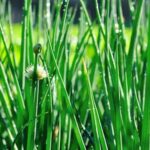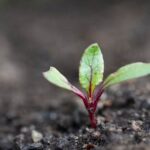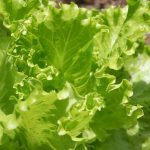Are you interested in starting a vegetable garden west of the Cascades? Whether you’re a seasoned gardener or a beginner, this region offers unique challenges and opportunities for growing your own produce. From the climate and soil conditions to community support and resources, there’s plenty to consider when it comes to vegetable gardening in this area.
The Pacific Northwest, particularly west of the Cascades, is known for its mild, wet winters and dry summers. This climate presents both advantages and challenges for vegetable gardening. The rich, fertile soil in the region also provides an ideal environment for growing a wide variety of vegetables. Understanding these factors is crucial for planning and maintaining a successful vegetable garden.
In this article, we will explore the key considerations for vegetable gardening in the region, including climate and soil considerations, the best vegetables to grow, tips for starting and maintaining a successful garden, pest and disease management strategies, watering and irrigation methods, as well as community resources and support available for local gardeners. By the end of this guide, you’ll be equipped with the knowledge and tools to start your own thriving vegetable garden west of the Cascades.
Climate and Soil Considerations for Vegetable Gardening in the Region
When it comes to vegetable gardening west of the Cascades, understanding the climate and soil considerations is crucial for a successful harvest. The region’s climate is characterized by mild, wet winters and dry summers, with an average annual rainfall ranging from 30 to 90 inches. This presents both opportunities and challenges for vegetable gardeners, as certain crops thrive in this unique environment while others may require special care.
In terms of soil, the Cascades region is known for its fertile, well-drained soils that are rich in organic matter. However, it’s important to note that the pH levels can vary within different areas of the region. Understanding the specific soil composition in your gardening area can help determine which vegetables will grow best.
To help you make informed decisions about what to plant and when to plant it, here are some vegetables that are well-suited for vegetable gardening west of the Cascades:
- Leafy greens: Lettuce, kale, spinach
- Root vegetables: Carrots, beets, radishes
- Brassicas: Broccoli, cauliflower, Brussels sprouts
- Alliums: Onions, garlic, leeks
Additionally, consider using raised beds or containers if your soil has drainage issues or if you’re dealing with limited space. These options allow for better control over soil quality and moisture levels. With careful planning and attention to these climate and soil considerations, you can maximize your vegetable garden’s potential in the Cascades region.
Best Vegetables to Grow West of the Cascades
When it comes to vegetable gardening west of the Cascades, there are some vegetables that thrive in the unique climate and soil conditions of the region. Whether you are a seasoned gardener or just starting out, it’s important to choose the right vegetables to maximize your success.
Leafy Greens
Leafy greens such as kale, spinach, and lettuce are well-suited for vegetable gardening west of the Cascades. These cool-season crops thrive in the mild, moist climate of the region and can be grown year-round with proper care.
Root Vegetables
Root vegetables like carrots, beets, and radishes also do well in the Cascades region. The rich, well-draining soil provides an ideal environment for these crops to develop and flourish. Consider planting a variety of root vegetables to enjoy a diverse harvest throughout the growing season.
Brassicas
Brassicas such as broccoli, cauliflower, and Brussels sprouts are excellent choices for vegetable gardening west of the Cascades. These hardy crops can withstand the cool, wet weather common in the region and produce bountiful yields with proper care.
By selecting vegetables that are well-suited to the climate and soil conditions of the region, you can set yourself up for a successful and rewarding gardening experience. Remember to also consider factors such as sunlight exposure, planting times, and proper spacing to maximize your vegetable garden’s potential yield.
Tips for Starting and Maintaining a Successful Vegetable Garden
Starting and maintaining a successful vegetable garden west of the Cascades requires careful planning and ongoing attention. Here are some tips to help you get started and keep your vegetable garden thriving:
- Choose the right location: Select a spot for your garden that receives at least 6-8 hours of sunlight each day, as most vegetables thrive in full sunlight. It’s also important to consider factors such as drainage and proximity to water sources.
- Prepare the soil: West of the Cascades, the soil tends to be acidic, so it’s important to test the pH level and amend the soil as needed. Adding organic matter, such as compost or well-rotted manure, can improve soil structure and fertility.
- Select the right vegetables: Not all vegetables are well-suited to the climate of the region. Focus on growing vegetables that thrive in cooler temperatures, such as leafy greens, root vegetables, and certain herbs.
Once your garden is established, it’s important to maintain it properly in order to ensure a healthy harvest. Here are some tips for keeping your vegetable garden flourishing:
- Water regularly: The maritime climate west of the Cascades can bring plenty of rainfall, but it’s still important to monitor soil moisture levels and provide supplemental irrigation during dry spells.
- Weed often: Weeds can compete with your vegetable plants for water and nutrients, so it’s important to stay on top of weed control by pulling or mulching them regularly.
- Monitor for pests and diseases: Keep an eye out for common pests like slugs, aphids, and caterpillars, as well as diseases such as powdery mildew. Consider using natural pest control methods whenever possible.
By following these tips and staying attentive to the needs of your vegetable garden, you can increase your chances of success when gardening west of the Cascades.
Dealing With Pests and Diseases in Vegetable Gardens in the Area
Identifying Common Pests and Diseases
When it comes to vegetable gardening west of the Cascades, it’s essential to be aware of the common pests and diseases that can affect your plants. In this region, some of the most prevalent pests include aphids, slugs, and powdery mildew. Identifying these issues early on is crucial for mitigating their impact on your garden.
Natural Pest Control Methods
One way to address pests and diseases without resorting to harsh chemicals is by implementing natural pest control methods. For example, introducing beneficial insects such as ladybugs or lacewings can help keep aphid populations in check. Additionally, using barriers like copper tape can deter slugs from attacking your plants. It’s also important to practice good sanitation in the garden by removing diseased plant material promptly.
Preventative Measures
In addition to addressing existing pest and disease problems, taking preventative measures can help safeguard your vegetable garden from future issues. This includes rotating crops each season to prevent the buildup of soil-borne diseases, promoting good air circulation among plants to reduce the risk of fungal infections, and inspecting your plants regularly for any signs of trouble.
By being proactive in your approach to pest and disease management, you can increase the likelihood of a successful harvest from your vegetable garden west of the Cascades.
Importance of Watering and Irrigation in West of the Cascades Vegetable Gardens
Watering and irrigation are crucial factors to consider when it comes to vegetable gardening west of the Cascades. The region’s climate, characterized by mild, wet winters and dry summers, requires gardeners to pay close attention to their watering practices in order to ensure the success of their crops. With an average annual rainfall of 36 inches, supplemental irrigation is often necessary during the drier months, particularly for plants with shallow root systems.
In addition to rainfall patterns, the type of soil prevalent west of the Cascades also plays a role in determining watering needs. The area’s predominantly clay soil tends to hold onto water longer, making it essential for gardeners to strike a balance between providing enough moisture for their plants without causing waterlogging. Proper irrigation techniques can help mitigate these challenges and promote healthy plant growth.
One effective method for ensuring adequate hydration for your vegetable garden in this region is drip irrigation. This system delivers water directly to the base of plants, minimizing wastage through evaporation and runoff. Mulching around vegetable crops can also aid in water retention and reduce the frequency of irrigation. Additionally, timing your watering sessions is key – early mornings or late afternoons are optimal times as they allow for better absorption by the plants before the sun is at its strongest.
| Annual Rainfall | 36 Inches |
|---|---|
| Climate | Mild, wet winters and dry summers |
| Main Soil Type | Clay soil |
| Recommended Irrigation System | Drip Irrigation |
Community Resources and Support for Vegetable Gardeners in the Region
One of the most important aspects of successful vegetable gardening west of the Cascades is access to community resources and support. Fortunately, there are many organizations and groups dedicated to helping gardeners in the region, providing valuable assistance, information, and networking opportunities.
One such resource is the local Master Gardener program, which offers classes, workshops, and a hotline for gardeners to call with questions or concerns. These knowledgeable volunteers can provide guidance on everything from soil health to pest management specific to vegetable gardening west of the Cascades.
Additionally, many communities have garden clubs or horticultural societies that host regular meetings and events where gardeners can share their experiences, learn from experts, and connect with like-minded individuals. These groups often organize plant swaps, seed exchanges, and community gardens that provide even more opportunities for engagement and learning about successful vegetable gardening west of the Cascades.
Finally, local nurseries and garden centers are also valuable resources for vegetable gardeners in the area. They often offer classes and seminars on topics relevant to gardening in the Pacific Northwest and can provide specific advice tailored to the unique challenges and opportunities of cultivating a thriving vegetable garden west of the Cascades.
| Community Resources | Support Offered |
|---|---|
| Master Gardener Program | Classes, workshops, hotline for questions |
| Garden Clubs/Horticultural Societies | Meetings, events, plant swaps, community gardens |
| Nurseries/Garden Centers | Classes/seminars, specific advice for region |
Harvesting and Preserving Your Vegetable Garden’s Bounty in the Cascades
In conclusion, vegetable gardening west of the Cascades offers a unique and rewarding experience for gardeners. The region’s mild climate and fertile soil create an ideal environment for growing a variety of vegetables. With the right knowledge and resources, anyone can enjoy a successful vegetable garden in this area.
Once your vegetable garden has produced a bountiful harvest, it’s important to know how to properly preserve your fruits and vegetables. Canning, freezing, and pickling are popular methods for extending the shelf life of your produce. By learning these preservation techniques, you can continue to enjoy the fruits of your labor long after the growing season has ended.
Additionally, the community support and resources available to vegetable gardeners in the region can be invaluable. Whether it’s joining a local gardening club or participating in workshops and classes, tapping into these resources can help you connect with other like-minded individuals and further enhance your gardening skills.
Overall, vegetable gardening west of the Cascades offers a wealth of opportunities for both seasoned and beginner gardeners alike. With a little knowledge and dedication, anyone can cultivate a thriving vegetable garden in this lush and fertile region.
By taking advantage of the favorable climate and soil conditions in the area, selecting the right vegetables to grow, incorporating effective gardening practices, utilizing community support, and preserving your harvest effectively, you can truly maximize the potential of your vegetable gardening experience west of the Cascades. So get out there, get your hands dirty, and start reaping the rewards of all your hard work in your own backyard vegetable garden.
Frequently Asked Questions
What Vegetables Grow Best West Facing?
Vegetables that grow best when facing west are those that thrive in full sun and warm temperatures. Some examples include tomatoes, peppers, eggplant, and corn. These veggies need plenty of sunlight to ripen properly.
What Vegetables Can You Grow in the Pacific Northwest?
The Pacific Northwest’s climate lends itself well to growing a variety of vegetables. Cool-season crops like lettuce, kale, broccoli, and carrots do especially well in this region due to the mild and wet conditions. Root vegetables such as potatoes and beets also thrive in the Pacific Northwest’s soil.
Should Vegetable Gardens Be East or West Facing?
Whether a vegetable garden should be east or west facing depends on the specific needs of the plants being grown. Generally, east-facing gardens receive morning sun and are better suited for cool-season vegetables that prefer some shade from intense afternoon heat.
West-facing gardens receive afternoon sun and are ideal for warm-season vegetables that need ample sunlight to flourish.

If you’re looking to get into vegetable gardening, or are just looking for some tips on how to make your current garden better, then you’ve come to the right place! My name is Ethel and I have been gardening for years. In this blog, I’m going to share with you some of my best tips on how to create a successful vegetable garden.





